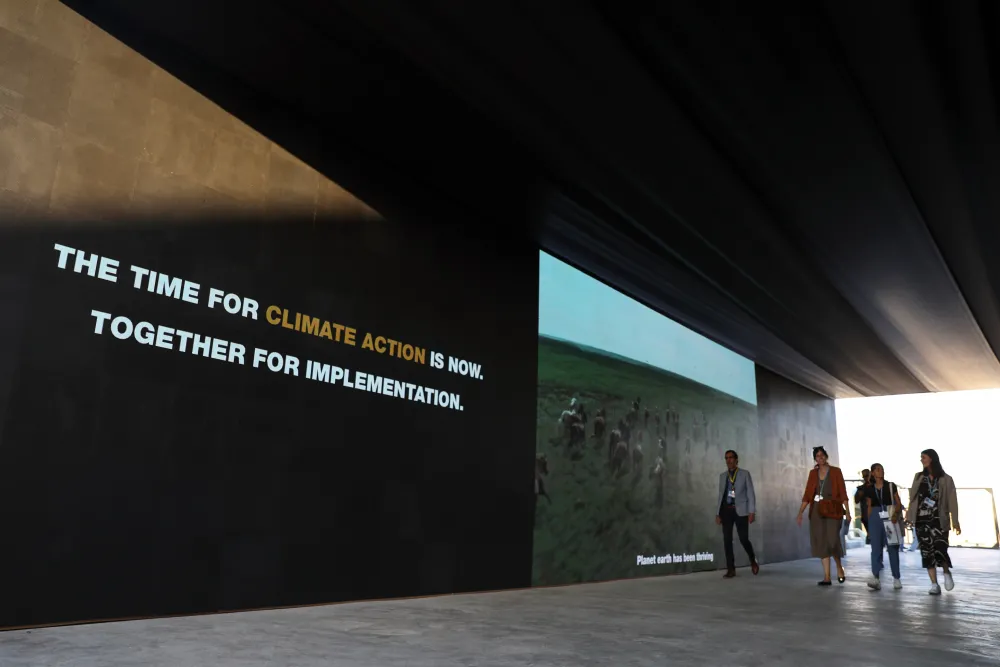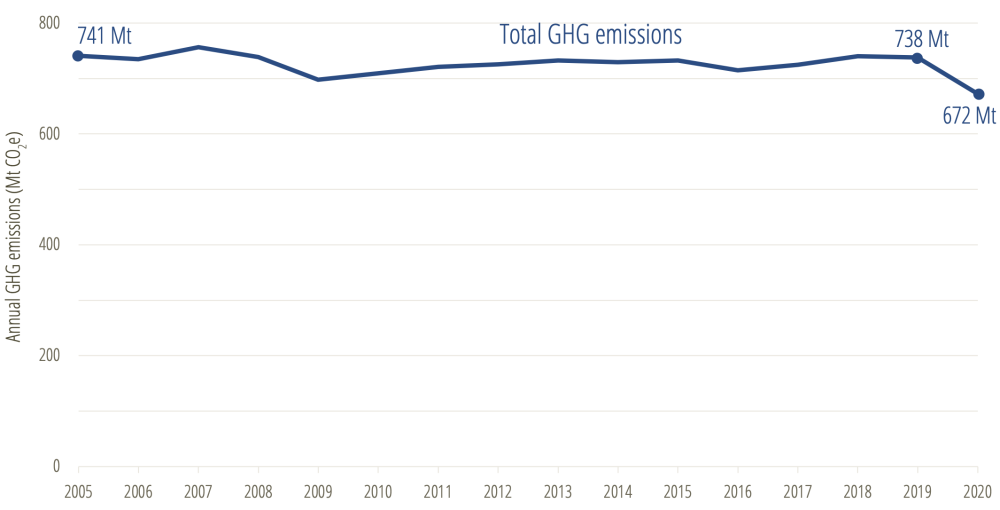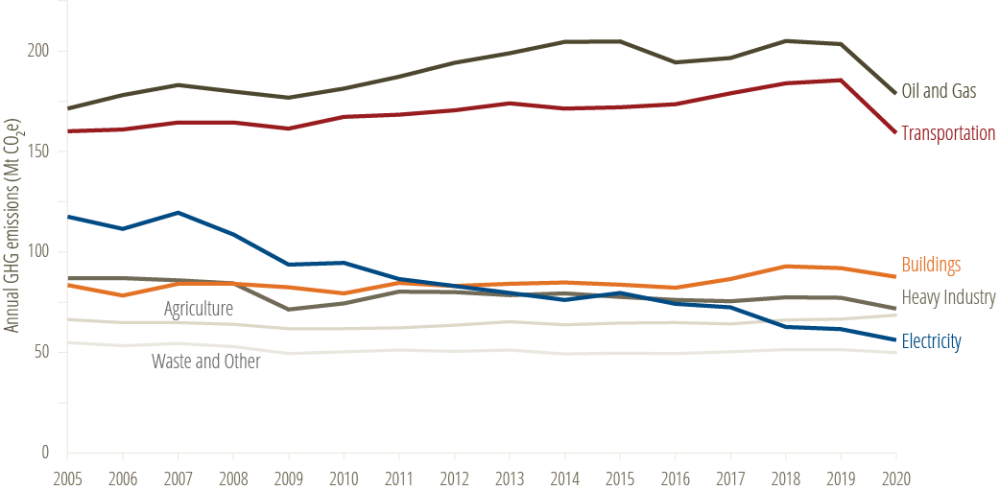With the consequences of the climate crisis becoming increasingly evident, every UN Climate Conference is an important one. As a long-time advocate for safe, sustainable energy I’m attending this year’s conference — COP27 — taking place in Sharm el Sheikh, Egypt. The climate summit is both an opportunity for world leaders to continue urgent climate discussions, no matter how fraught they may be, and a time to highlight what has been promised and how much progress on climate has, or hasn’t, been made.
Where does Canada stand on climate action?
At COP26 in Glasgow last year, the federal government increased the ambition of its carbon-reduction target made under the Paris Agreement in 2015. Under the new target, Canada would reduce greenhouse gases (GHGs) by 40 per cent to 45 per cent below 2005 levels by 2030, a significantly deeper reduction than the original commitment of a 30 per cent decline.
The Liberal government has also pledged that Canada will achieve net-zero carbon emissions by 2050, based on a combination of deep reductions in emissions and, where necessary, the use of technology to capture and store carbon as well as nature-based offsets, in which natural areas that absorb carbon or prevent the release of GHGs are protected as a counterbalance to the greenhouse gases emitted.
There was a steep drop in GHGs in 2020 due to the COVID-19 pandemic — 672 Mt of CO2e were emitted which is 9.3 per cent below 2005 levels (Figure 1). However, Canadian emissions are believed to have rebounded in 2021, although the data is not yet available.
In 2019, before the pandemic, Canada barely nudged emissions downward. The country’s GHG emissions were 738 Mt in 2019 compared to 741 Mt in 2005.
Among the key economic sectors, there were sizeable emission reductions in electricity and heavy industry. However, these declines were eclipsed by increases in the oil and gas industry, transportation and, to a lesser extent, the buildings sector (Figure 2).
Putting a price on carbon
At COP26, Canada endorsed the Glasgow Declaration on Carbon Pricing in the Americas which seeks to advance the adoption by countries around the world to put a price on carbon dioxide emissions. Negotiators in Glasgow also agreed to implement Article 6 of the Paris agreement which allows for international trading of emission credits.
Canada passed legislation in 2018 setting a price on carbon emissions, starting at $30 per tonne of CO2e and rising to $50 per tonne in 2022. In its December 2020 plan, A Healthy Environment and A Healthy Economy, the government announced the price would rise by $15 annually after 2022 to $170 per tonne by 2030.
This is the key policy to incentivize investments in decarbonization. In its Emissions Reduction Plan, released earlier this year, Environment and Climate Change Canada said that the carbon price combined with the Clean Fuel Regulations would account for 25 per cent of planned emission reductions by 2030.
Implementing policies to provide certainty on a future carbon price is the critical next step. We urge the government to move forward on establishing price certainty in order to guarantee that significant investments will be made in decarbonization.
Emissions from transportation
Emissions from transportation represented roughly 25 per cent of Canada’s total GHGs in both 2019 and 2020, just slightly lower than the percentage accounted for by the oil and gas industry. Between 2005 and 2019, emissions from transport rose 15.6 per cent before falling off in the 2020 pandemic year (Figure 2).
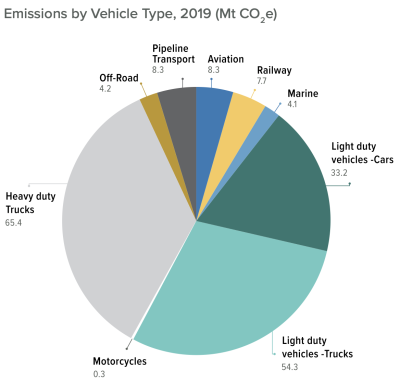 Light duty cars and trucks account for 47 per cent of transportation emissions while heavy-duty trucks are responsible for 35 per cent. Aviation accounts for 4.5 per cent of Canada’s emissions.
Light duty cars and trucks account for 47 per cent of transportation emissions while heavy-duty trucks are responsible for 35 per cent. Aviation accounts for 4.5 per cent of Canada’s emissions.
Between 2005 and 2020, GHG emissions from the transport sector hardly moved, decreasing by less than 1 per cent. But even this incremental decrease is somewhat misleading. GHG emissions increased by 16 per cent between 2005 and 2019 before being completely offset by a 26 Mt CO2e reduction between 2019 and 2020 due to the pandemic.
While the data is not available yet for 2021 or 2022, transportation emissions are expected to have rebounded sharply from the 2020 pandemic levels.
According to Canada’s Emissions Reduction Plan, transportation emissions will need to decrease by 23 per cent from 2019 levels in order to meet Ottawa’s 2030 target. Cutting GHGs to 143 Mt CO2e would equate to an 11 per cent reduction in transportation emissions compared to 2005 levels.
At COP26, Canada signed declarations to accelerate international partnerships to tackle emissions from transportation. The declarations included a transition to 100 per cent zero-emission passenger vehicles (ZEVs) by 2035 in developed countries such as Canada. Canada also joined other countries in committing to achieving a full transition to zero-emission medium- and heavy-duty vehicles in new fleets by 2040, with an interim target that ZEVs make up 30 per cent of vehicles sold by 2030.
To operationalize Canada’s global commitments, the federal government proposed a sales mandate of 100 per cent zero emission light-duty vehicles — ie, cars and small vans — by 2035, with interim targets of 20 per cent of sales by 2026 and 60 per cent by 2030. Canada additionally committed to 35 per cent of medium- and heavy-duty vehicle sales be zero emission by 2030 and 100 per cent by 2040.
 In order to reach these goals, significant investment in charging infrastructure, skills development and capacity building needs to be made, which will require more targeted incentives than have been put forward to date. Our research shows that Canada will need to invest between $7 and $13 billion to install medium- and heavy-duty charging infrastructure and $9 billion to install hydrogen refueling infrastructure by 2050.
In order to reach these goals, significant investment in charging infrastructure, skills development and capacity building needs to be made, which will require more targeted incentives than have been put forward to date. Our research shows that Canada will need to invest between $7 and $13 billion to install medium- and heavy-duty charging infrastructure and $9 billion to install hydrogen refueling infrastructure by 2050.
To offset the comparatively high cost of purchasing ZEVs, purchase incentives are an important consideration. The federal government and several provinces (significantly not Ontario) offer rebates for both passenger and medium- and heavy-duty vehicles. An increase in uptake will require more provinces to do likewise.
Emissions from buildings
The federal government pledged a raft of policies to tackle GHGs generated from Canada’s built environment, including drafting a Canada Green Building Strategy.
Ottawa is funding programs to support retrofitting residential and commercial buildings to improve energy efficiency and allow switching from fossil-based energy to renewable sources. However, the government has yet to advance policies or provide sufficient funding to meet the goal of substantially decarbonizing Canada’s buildings.
Emissions in the buildings sector have been trending upwards since 2005 as Canada's building stock continues to grow. It is critical that, as new buildings are constructed, they are net-zero ready and energy efficient to avoid the need for costly retrofits in the future.
However, by 2030, more than 80 per cent of Canada's building stock will still be made up of buildings that exist now. The most recent data shows that the building sector accounted for 91 Mt of CO2e emissions, or 12 per cent of Canada’s total, mostly generated using natural gas to heat water and space. That’s up eight per cent from 2005 levels. The figure does not include emissions from off-site power plants that provide electricity for lighting and other energy needs.
The federal government has pledged to establish model net-zero-ready building codes that could be adopted by provinces and territories. Net-zero-ready requires the highest standards for energy efficiency and construction that could incorporate roof-top solar, electric heat pumps and other technology to eliminate reliance on fossil fuel energy.
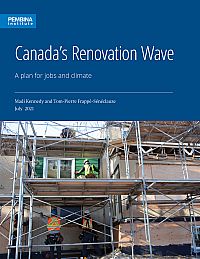 The Pembina Institute projects that reaching net zero in 2050 will require carrying out retrofits at an annual pace of nearly 600,000 homes (11.4 million in total) and the equivalent of 32 million m2 of commercial property until 2040, at a cost of roughly $21 billion per year.
The Pembina Institute projects that reaching net zero in 2050 will require carrying out retrofits at an annual pace of nearly 600,000 homes (11.4 million in total) and the equivalent of 32 million m2 of commercial property until 2040, at a cost of roughly $21 billion per year.
The federal government has projected a drop in building emissions of 42 per cent between 2019 and 2030, though details on how that will be achieved were lacking.
A cap on oil and gas emissions
At the Glasgow summit, Prime Minister Justin Trudeau announced that the government would be limiting, or capping, emissions from the oil and gas sector. The cap would decline over time at a pace that would see a drop in GHGs from oil and gas that aligned with reaching net-zero emissions in 2050.
The oil and gas industry has been the fastest growing source of emissions in the country since 2005, narrowly surpassing emissions from transportation (Figure 2). It accounted for 203 Mt in 2019, up 19 per cent from 2005.
While carbon intensity — or carbon emissions per barrel of oil produced — declined by more than 30 per cent between 2005 and 2020, the growth in oil production outweighed the gains made in lower carbon intensity. And despite these improvements, Canada remains one of the most carbon-intensive crude oil producers in the world.
 The Pathways Alliance, a group of Canada’s largest oilsands producers, has released a plan for emissions reduction. The plan relies heavily on multi-billion-dollar projects to capture carbon dioxide from operations and sequester it underground. The industry is looking for generous tax breaks from the federal and provincial governments to help finance the projects.
The Pathways Alliance, a group of Canada’s largest oilsands producers, has released a plan for emissions reduction. The plan relies heavily on multi-billion-dollar projects to capture carbon dioxide from operations and sequester it underground. The industry is looking for generous tax breaks from the federal and provincial governments to help finance the projects.
Although the Pathways Alliance commitment has generated much attention, many details of its plans remain undisclosed, and since the alliance was established there have been no significant decarbonization investment decisions made by its members. Nevertheless, the federal government is counting on dramatic reductions in oil and gas emissions in order to meet its overall emission reduction targets for 2030 and net-zero goal for 2050. It is targeting a reduction of 42 per cent from 2019 levels, which would equate to a 31 per cent drop relative to 2005.
In a submission in September 2022, the Pembina Institute urged the federal government to set 2026 targets for capping oil and gas emissions to ensure the sector is on track for the 2030 goal. At a minimum, the cap for oil and gas sector emissions should be set at a 45 per cent reduction from 2005 levels by 2030, with clear implementation timelines. We also recommended that there be no additional federal support beyond the existing suite of policies which includes an investment tax credit, carbon offset credits, clean fuel regulation credits, and carbon contracts for difference to ensure price certainty for investors in decarbonization.
Creating certainty for a net-zero grid by 2035
In Glasgow, Canada also committed to decarbonizing its grid by 2035. If Canada achieves this objective, it will have a significant and enduring downward impact on the carbon footprints of all Canadians, and allow Canada to position itself as an international leader in clean electricity. In order to implement this goal, the federal government is taking a several steps including investments and incentives for clean energy development and regulations to disincentivize polluting sources.
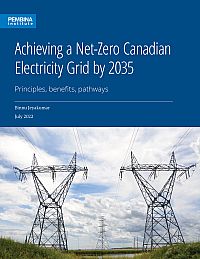 Most significant of these is the Clean Electricity Regulation that Environment and Climate Change Canada is currently drafting. If designed well, it could be the first legislation of its kind in the world to achieve a decarbonized grid by 2035 in an economy with large emitting sectors. To help usher in the private sector investments needed for a clean grid, and to avoid lock-in of unnecessary fossil fuel infrastructure, it is critical that this regulation send early signals through interim standards, reduce loopholes, and use credible mechanisms to ensure true net-zero emissions.
Most significant of these is the Clean Electricity Regulation that Environment and Climate Change Canada is currently drafting. If designed well, it could be the first legislation of its kind in the world to achieve a decarbonized grid by 2035 in an economy with large emitting sectors. To help usher in the private sector investments needed for a clean grid, and to avoid lock-in of unnecessary fossil fuel infrastructure, it is critical that this regulation send early signals through interim standards, reduce loopholes, and use credible mechanisms to ensure true net-zero emissions.
In addition, Canada needs to increase the efficacy of its carbon pricing scheme for the electricity sector by exposing all emissions to the carbon price. And the government needs to provide funding — particularly in light of the scale of funding provided by the Inflation Reduction Act in the U.S. — for clean energy solutions such as energy storage, energy efficiency, and transmission interconnections.
More promises
Canada has made other promises as well that will come under scrutiny in the days ahead at the climate conference. These include banning coal exports by 2030 and signing on to the Global Methane Pledge at COP26 as well as pledging to reduce methane emissions in the oil and gas sector in Canada by at least 75 per cent by 2030.
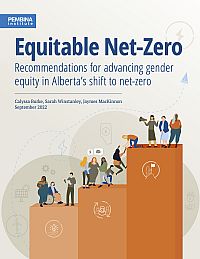 At the same time, the transition to a clean energy economy must be done in way that is truly equitable. Gender inequities and the exclusion of marginalized communities from the energy sector is persistent. With the opening of new markets in clean energy come new opportunities to introduce parity and to support initiatives that are more inclusive than has been the case thus far.
At the same time, the transition to a clean energy economy must be done in way that is truly equitable. Gender inequities and the exclusion of marginalized communities from the energy sector is persistent. With the opening of new markets in clean energy come new opportunities to introduce parity and to support initiatives that are more inclusive than has been the case thus far.
As a signatory of Equal by 30, a public commitment to work towards equal pay, equal leadership, and equal opportunities for women in the clean energy sector by 2030, the Pembina Institute is hosting a roundtable at the COP27 Canada Pavilion to connect findings from the Equal by 30 initiative to the equitable energy transformation conversation that is emerging at the global level.
COP27 is an important forum where countries can be held to account. I will be watching closely for indications that Canada is swiftly turning its past pledges into climate actions to establish a cap on oil and gas emissions, reduce methane emissions, and advance commitments to achieve a net-zero a clean grid by 2035.

